| Location | Ontario, Canada |
| Commodities Primary | Silver, Gold |
| Commodities Secondary | Cobalt, Nickel, Copper |
| Total Current Year Production | Period Ended December 31, 2019 |
| Silver; ounces | 0 |
| Gold; ounces | 0 |
| Cobalt; pounds | 0 |
| Nickel; pounds | 0 |
| Copper; pounds | 0 |
| Total Known Current and Historical Production | 1910 – 2019 |
| Silver; ounces | 71,831,000 |
| Gold; ounces | 38,000 |
| Cobalt; pounds | 1,403,000 |
| Nickel; pounds | 56,000 |
| Copper; pounds | 95,000 |
| Total Known Compliant Reserves | Proven & Probable |
| Silver; ounces | 0 |
| Gold; ounces | 7,284,000 |
| Cobalt; pounds | 0 |
| Nickel; pounds | 0 |
| Copper; pounds | 0 |
| Total Known Compliant Exclusive Resources | Measured & Indicated |
| Silver; ounces | 2,960,000 |
| Gold; ounces | 3,776,000 |
| Cobalt; pounds | 450,000 |
| Nickel; pounds | 15,966,000 |
| Copper; pounds | 8,095,000 |
| Inferred | |
| Silver; ounces | 0 |
| Gold; ounces | 55,078,000 |
| Cobalt; pounds | 986,000 |
| Nickel; pounds | 220,089,000 |
| Copper; pounds | 11,826,000 |
| Total Known Endowment | 1909-2019 |
| Silver; ounces | 74,791,000 |
| Gold; ounces | 66,176,000 |
| Cobalt; pounds | 2,839,000 |
| Nickel; pounds | 236,111,000 |
| Copper; pounds | 20,016,000 |
Total Known Endowment includes current and historical production and compliant reserves and resources
Data compiled from DigiGeoData database,Ontario Mineral Deposit Inventory, technical reports, and corporate websites
DigiGeoData has compiled this information using best practices and does not warrant the completeness or accuracy.
All data should be checked and verified before use
Exploration in the Shining Tree-Gowganda area was related to the discovery of silver in the Cobalt area in 1903. Prospectors began looking outward from the Cobalt area for other areas that may be home to silver in Nipissing Diabase.
SILVER
Gowganda Area
The Gowganda silver rush occurred from 1906 -1910. Early access into the area was limited due to a lack of roads. Silver was discovered on several properties in 1908 some of which eventually produced silver.
The top producing mines include:

GOLD
The Shining Tree gold camp underwent an initial surge of development from 1912 to 1925, and then again from 1933 to 1939.
There are two main areas associated with gold exploration. The first centres around the Shining Tree area which is located centrally in the map area.
The second area is southwest of Gogama in the southwestern part of the map area.
Shining Tree Area
Gold was found in the Shining Tree area in 1912 on what is now the Rhonda Mine. The property produced a limited amount of gold (2727 ounces).
The Tyranite mine was discovered in 1939 and produced 31,352 ounces of gold until closure in 1942.
The Juby gold deposit is the only known gold deposit with NI 43-101 compliant resources. There are other zones which have not been fully explored.
Gogama Area
There has been no known gold production from this area.
Exploration in this area started in the early 1900s. The Cote and Watershed deposits are the only two deposits with NI 43-101 compliant resources.
With the increase in the price of gold and silver, exploitation continues in this area with companies seeking to increase the size of existing zones and deposits and even find new discoveries.
The Shining Tree – Gowganda area encompasses a region of Archean volcanic and sedimentary rocks that occurs south of the main part of the Abitibi greenstone belt. Volcano-sedimentary rocks of the Shining Tree – Gowganda area are intruded in the northwest by the Kenogamissi Batholith, intruded to the southwest by the Ramsey-Algoma granitoid complex, and are unconformably overlain to the east by sediments of the Huronian Supergroup.
Recent geochronological work has enabled the Archean stratigraphy of the area to be correlated with that of the rest of the Abitibi greenstone belt. In the area, Archean volcanic rocks consist of tholeiitic mafic’s, komatiitic ultramfic’s and calc-alkaline intermediate’s to felsic’s.
These volcanic rocks are part of the 2720-2710 Ma Kidd-Munro assemblage. The Indian Lake Group sediments were considered to belong to the Timiskaming assemblage as these sandstones and conglomerate rocks were similar in appearance to the Timiskaming assemblage rocks in the Timmins and Kirkland Lake areas. However, recent age dating of the Indian Lake Group sedimentary rocks on the property and in the Shining tree area has returned age determinations of 2690-2680 Ma which means that these rocks are at least 10 million years older than the 2676-2670 Ma Timiskaming assemblage rocks of the Timmins and Kirkland Lake areas. Therefore, the Indian Lake Group is most similar to the 2690-2680 Ma Porcupine assemblage.
In addition, the Ridout – Tyrrell Deformation Zone has been interpreted to extend through the Shining Tree (Ayer, et.al, 2013).
Adapted From:
11/21/2013 (D Guindon) – From Campbell, Sexton and Studd (2013)
Geology Ontario
Ministry of Energy, Northern Development and Mines
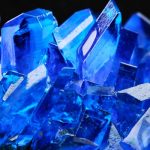
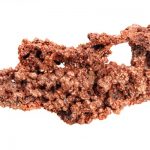
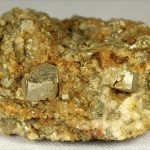
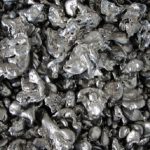
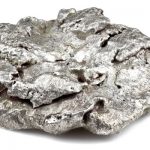
Copyright © 2021 DigiGeoData | Powered by ViaMarket
Data compiled from DigiGeoData database.
DigiGeoData has compiled this information using best practices and does not warranty the completeness or accuracy.
All data should be checked and verified before use